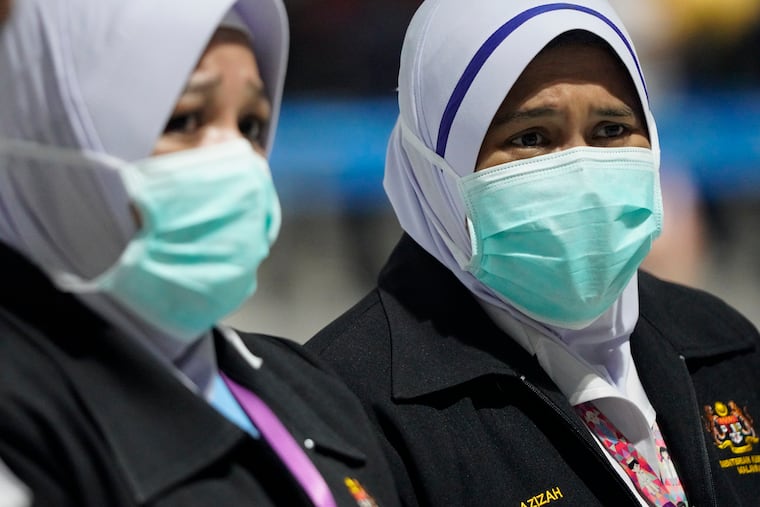First coronavirus case identified in U.S.; man had traveled to China
The infected patient, a resident of Snohomish County, Wash., is being hospitalized as as precaution.

The coronavirus is now in the United States.
A resident of Snohomish County, Wash., apparently was infected with the virus while traveling earlier in January in the region of Wuhan, China, where the pathogen is thought to have originated. He has largely recovered but remains hospitalized as a precaution, federal and state health officials said Tuesday in a teleconference.
» READ MORE: Coronavirus: What we know now
The man said he had not visited the large markets where the virus is believed to have jumped from animal to human, supporting a growing body of evidence that the microbe can be transmitted from person to person.
Exactly how well it can spread among humans remains unclear, but so far the risk appears to be low, said Nancy Messonnier, a senior physician with the U.S. Centers for Disease Control and Prevention.
“How easily or sustainably this virus is spreading remains unknown,” said Messonnier, director of the National Center for Immunization and Respiratory Diseases.
The U.S. patient was healthy upon returning home from China last week, but then started to experience symptoms and went to see his physician over the weekend. The provider notified his local health department, which in turn notified Washington state officials. The patient’s samples were sent overnight to a CDC lab, where the presence of the virus was confirmed.
The CDC, which has been checking airplane passengers for symptoms at San Francisco, New York, and Los Angeles airports, is adding similar screenings this week at airports in Atlanta and Chicago.
More than 200 cases have been identified in China, with symptoms that can include fever, cough, and difficulty breathing. A handful of cases have been confirmed in Thailand, Japan, and South Korea.
Several people have died from the infection, but in most cases, the impact is fairly mild. The true number of cases is likely far higher than 200, said infectious diseases specialist Pablo Tebas, a professor at the University of Pennsylvania’s Perelman School of Medicine.
“Most likely, many people have what seems like a cold, and they recover, and they never think twice about it,” Tebas said.
Because many of these mild cases are likely to elude identification, the rate of severe cases as a fraction of the total is likely quite low, said David B. Weiner, a molecular immunologist at the Wistar Institute.
The reason the U.S. case was identified so quickly is that the patient, who was aware of the outbreak in China, told his physician he had been traveling there, said Scott Lindquist, an epidemiologist for the State of Washington who joined the CDC news conference.
“This was a very astute gentleman,” he said.
Coronaviruses are so named because the outer edge of each particle is covered with a fringe of rounded protrusions, calling to mind the corona in a solar eclipse, said Weiner, executive vice president at Wistar, the research institute in West Philadelphia.
Most such viruses are found in animals such as camels and bats, but a handful have made the jump to humans in recent years, including SARS and MERS.
Asked about the possibility of developing a vaccine against the new coronavirus, Messonnier said it was worth exploring but would take years.
In the case of MERS, for example, the disease was first reported in 2012, and a vaccine is now in the early stages of human testing. Some of the work to develop that vaccine was conducted in Weiner’s lab at Wistar.